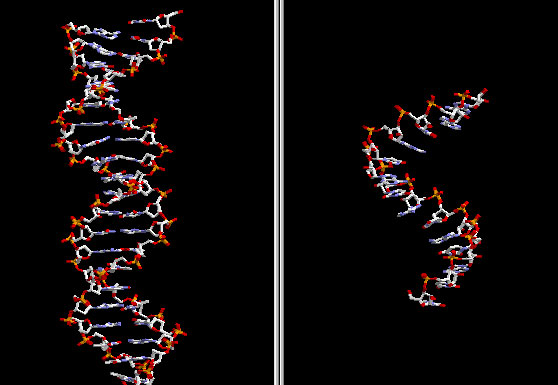'Drug of God' from ARN interferes
According to French Academy of Sciences Academy Jean-Paul Behr, in the future ARN intervention will be the center of the pharmaceutical industry.
Dr. Behr's statement published in Le Figaro newspaper is drawn from a series of applications being tested with interventional RNA (RNAi). In addition, the work on RNAi published in 1998 by two scientists Andrew Fire and Craig Mello was awarded the Nobel Prize for Medicine eight years later, enough to demonstrate the impact of this discovery. Research by Professor Fire and Mello shows that there are many RNAi molecules that exist from the embryonic stage to death in multicellular organisms with the task of regulating the 'functioning' of cells. The mechanism of RNAi is to break down the information RNAs (mRNAs) of jumping genes (transposons) that can cause mutations, viruses or other parasites injected . These 'invading' genes are detected. and disabled due to genetic code similar to RNAi.

Understanding the mechanism of action, many research groups around the world have tested gene therapy to treat viral diseases, cardiovascular disease, cancer, endocrine disorders. RNAi molecules carry a selective genetic code similar to the harmful gene introduced into the body to 'kill' those genes. This will be a true revolution of the pharmaceutical industry: the application of biotechnology is increasingly creating a foothold in addition to traditional methods of drug preparation by synthesizing chemical substances. However, for RNAi to become a true drug, scientists have to overcome many obstacles.
First, these molecules in nature are very fragile and exist only for a short time. The solution is to 'lock' oxygen atoms of RNAi, which causes this structure to be unsustainable. After that, RNAi will be treated to slow the elimination process by the kidneys. The advancement of the chemistry has helped develop small-size interfering RNAs (siRNAs) that are 100 times more sustainable than natural RNAi and can easily be synthesized in large quantities. Many biochemical companies have tried to put siRNA into parts of the body for treatment, such as some eye diseases such as macular degeneration related to old age.
The next difficulty is how to get siRNA into human cells, which are very well protected. Scientists are studying the 'Trojan horse' method: implanting siRNA into nanoparticles. Nanoparticles will let the cells 'swallow' naturally and release only siRNA once inside. This method helps siRNA to directly kill cancer cells that carry mutated genes without affecting healthy cells in the body.
- How to deal with drug poisoning
- How to provide first aid to people who have drug shock
- Behind the birth of the first anti-HIV drug
- Vietnam has new drugs to help addicts crave for drugs
- Increasing popularity of new drug-resistant TB strains
- Cedemex: Escape for drug addicts
- New breakthrough in the fight against drug resistance
- Prexige anti-inflammatory drug is withdrawn
- The unexpected reason makes the world scarce of drugs
- Detection of drugs that prevent HIV from reproducing in cells
- New achievements: Antiretroviral drugs with only 1 injection 1
- Selzentry: New anti-HIV drug licensed by FDA
 Green tea cleans teeth better than mouthwash?
Green tea cleans teeth better than mouthwash? Death kiss: This is why you should not let anyone kiss your baby's lips
Death kiss: This is why you should not let anyone kiss your baby's lips What is salmonellosis?
What is salmonellosis? Caution should be exercised when using aloe vera through eating and drinking
Caution should be exercised when using aloe vera through eating and drinking